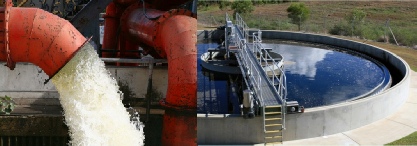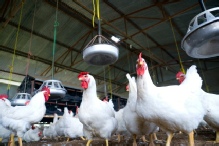




Septic System Restoration with
BioLife Septic
Case Study
Problem:
The system selected for the evaluation was a 900-
The system had completely malfunctioned. There was no drain evacuation and water had penetrated through the soil above the drain field and was standing there. The accumulation of bio-
System Function:
1. The tank, usually concrete, holds sewage and allows solids to settle and partially decompose. This gives most of the solids time to sink where anaerobic bacteria digest the organic matter for several weeks.
The tank holds three layers of waste material: a scum layer of grease, fat, soap and oil that forms along the top, an effluent layer of bacteria-
2. A porous leach field allows effluent containing small solids to seep into the soil, which further decomposes harmful pathogens and poisons before it reaches the groundwater that feeds lakes, rivers and drinking wells.
The field has two parts: the pipes or tile and crushed rock that carry and disperse the wastewater and the anaerobic bacteria that form beneath them. This breaks down the residual organic solids that escape the tank.
Common Ailments
Septic systems rely on the basic organic chemistry of bacteria decomposing organic material. If you introduce chemicals that discourage the natural decomposition process, organic solids will accumulate in the tank, displace liquids and overpower the leach field. Common culprits include large amounts of chlorine bleach, harsh cleansers and anti-
Because inorganic solids don’t decompose and some organic solids don’t break down fast enough, they accumulate in the tank.
Septic systems are typically unable to degrade the bio-
Estimated Cost of Repairs:
The repair/replacement cost the company had given the owner was broken down as follows in 2004 prices:
$1500 Excavation and disposal of old system
$2300 New system and installation
$750 Replacement of irrigation lines
$700 Sod Replacement
$1100 Landscaping
$6,350 Total
Along with the expense, there would also be a period of six days that the owner’s property would be in a state of total disruption.
The BioLife Septic Solution
- First, the septic tank was pumped out. Water began to backflow into the tank from the leach field. This was another indication that the leach fields were definitely not working. The decision was made to pump the system because there was total blockage in all drains and lines, and there was no other method to get adequate flow in system to carry the product throughout the system.
- BioLife Septic was added at an application rate of 1 gallon per 100 gallons of tank capacity directly into the septic tank. (9 gallons for the 900 gallon tank). At the junction box, 1 gallon of BioLife Septic was added for each 100 square feet of leach field in the system. (4.3 gallons for the 429 square feet in the leach field). Note: If the leach system is a chamber type system, the product must be added into each chamber based on the square footage of each line.
Within three days after treatment, the drains from the building began to flow more freely. Ten days after treatment, drain evacuation was performing as good as new. Sixty days later the bio mass accumulated in the bottom of the leach fields was cleared and the wastewater began leaching as designed.
Conclusion:
With slightly over 13 gallons of BioLife Septic the malfunctioning system was restored to normal operation. The owner saved $6,350 (2004 prices) in repair and/or replacement expenses. This was and was done without the unpleasantness of having his property in complete disruption of nearly a week.
Reminder:
Pumping a septic system too often can also cause damage. It takes six to eight weeks to restore the natural anaerobic bacterial process after pumping, but the tank can refill with liquid in as little as two weeks. This means the effluent that drains into the leach field will contain more solids for weeks, which can stress or even clog the field. BioLife Septic can mitigate much of this problem if used properly.
The Environmentally friendly way to keep your septic system functioning properly.
sales@turfprousa.com (2003B) 6-

Copyright ® 2010 Organic Products Company All rights reserved.
TurfPro USA products are the only all-

sales@turfprousa.com jfuller@ecofriendlyonline.com
(407) 340-
All products are safe to use around children, pets and wildlife.
All Products are Ecologically Friendly and Green in Manufacture.

Made in USA

